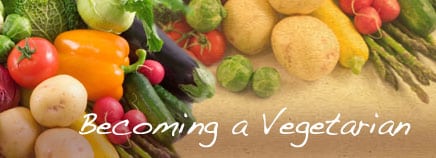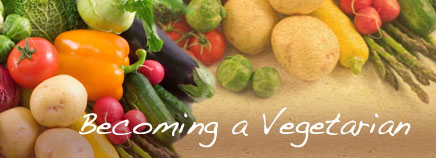Ok… I’m glad to have finally come across a diet option that has struck a nerve. The post on principles of vegetarianism has raised a lot of questions, and I’ll take this space to answer some of the more common and important ones.
1. I’ve always heard vegetarian diets are low in protein. Is this true?
It’s more correct to say vegetarians need to ensure they are taking enough protein. If you’re not eating red meat, you will still get plenty of protein by eating fish, dairy and eggs. If you are a strict vegan or have mostly eliminated fish, dairy and eggs, protein options include items such as whole grains, nuts and seeds, peanut butter, beans/legumes (e.g., navy beans, split peas and chickpeas) and protein from soy.
2. Can you identify various options for soy protein?
Sure. There’s soy cheese, nuts, milk and tofu products. Veggie burgers and chicken substitutes also will get you there.
3. Any dangers in these substitute foods?
Yes. You still need to limit sugar, salt and fat. Excessive cheese isn’t a good thing. Focus more on the low fat options such as beans and use cheese for variety.
4. Are vegetarians at nutritional risk beside low protein?
Vegetarians need to focus on eating adequate amounts of iron, calcium, zinc, Vitamin B12 and omega-3 fatty acids. The way foods are fortified now, this isn’t as big of a difference as it once was, although you rarely will go wrong working with a nutritionist as you make this dietary change.
5. Please give examples of various foods that address the nutritional concerns of vegetarians.
Calcium: Sources of this mineral include milk, seeds, beans, nuts, green vegetables, and foods fortified with calcium such as fruit juices.
Vitamin B12: You’ll find adequate amounts in dairy products, eggs and other foods labeled as fortified with B12.
Vitamin D: Vitamin D is found in fatty fish, egg yolks, cereals and soy milk labeled as being fortified with vitamin D.
Zinc: Zinc is abundant in beans and foods labeled as being fortified with zinc, such as milk and cereals.
Iron: Iron is found in beans, green vegetables, and foods labeled as being fortified with iron, such as cereals.
Vitamin C: Vitamin C helps the body increase iron absorption, so eating foods that are high in vitamin C (e.g., bell peppers) at the same meal as iron-rich foods is a good thing.
If you’re serious about making the conversion to a semi- or fully vegetarian diet, discussing your plans with a nutritionist is a good idea. Of course, you can talk to a nutritionist anytime at www.sterlingmedicaladvice.com or 844-SMA-TALK.
Thanks for liking and following Straight, No Chaser! This public service provides a sample of what 844-SMA-TALK and http://www.SterlingMedicalAdvice.com (SMA) offers. Please share our page with your friends on WordPress, Facebook @ SterlingMedicalAdvice.com and Twitter at @asksterlingmd.
Copyright © 2014 · Sterling Initiatives, LLC · Powered by WordPress




